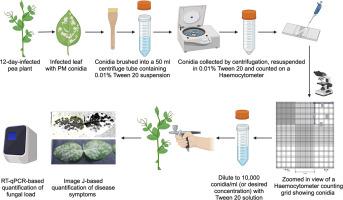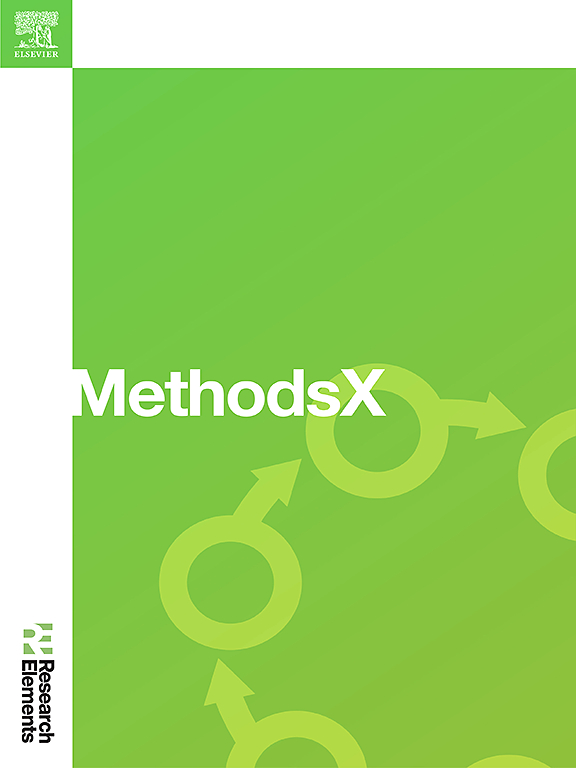基于喷雾接种和图像分析的豌豆叶片白粉病严重程度量化方法
IF 1.6
Q2 MULTIDISCIPLINARY SCIENCES
引用次数: 0
摘要
豌豆(Pisum sativum)是一种重要的农用豆科作物,但由生物营养真菌 Erysiphe pisi 引起的白粉病经常限制其年产量。要评估潜在的抗真菌化合物或抗性基因对病害控制的效果,需要一种简单的真菌接种方法,这种方法能控制初始接种体浓度,使接种体在叶片内和各重复中分布均匀,还需要一种定量评估病害严重程度的方法。在此,我们介绍了一种简便的喷雾接种方法,可在豌豆植株叶片上均匀分布一定浓度的 E. pisi 分生孢子,并可通过半自动图像分析对病害症状进行量化。分生孢子分布的均匀性是通过一种称为均匀性指数的新型分级系统验证的。此外,还利用 RT-qPCR 验证了喷雾接种方法和基于图像分析的病害定量的可重复性。这些程序允许在宏观和分子水平上对白粉病的严重程度进行精确定量。本文章由计算机程序翻译,如有差异,请以英文原文为准。

Spray inoculation and image analysis-based quantification of powdery mildew disease severity on pea leaves
Pea (Pisum sativum) is an important agricultural legume crop, but powdery mildew disease caused by the biotrophic fungus Erysiphe pisi regularly limits its annual yield. Assays to evaluate the efficacy of potential antifungal compounds or resistance genes for disease control require a simple fungal inoculation method that provides control over the initial inoculum concentration and enables uniform inoculum distribution within a leaf and across replicates as well as a method for the quantitative assessment of disease severity. Here, we present an easy spray inoculation method for the uniform distribution of a defined concentration of E. pisi conidia on the leaves of pea plants and a semi-automated image analysis-based quantification of disease symptoms. The uniformity in conidial distribution was validated using a novel grading system termed the uniformity index. In addition, RT-qPCR was used to validate the reproducibility of the spray inoculation method and image analysis-based disease quantification. These procedures permit the accurate quantification of powdery mildew disease severity at macroscopic and molecular levels.
- •Uniform and reproducible inoculum distribution on leaves using a simple and inexpensive spray device
- •Rapid and reproducible quantification of powdery mildew disease symptoms using open-source software without the requirement of computational expertise
求助全文
通过发布文献求助,成功后即可免费获取论文全文。
去求助
来源期刊

MethodsX
Health Professions-Medical Laboratory Technology
CiteScore
3.60
自引率
5.30%
发文量
314
审稿时长
7 weeks
期刊介绍:
 求助内容:
求助内容: 应助结果提醒方式:
应助结果提醒方式:


